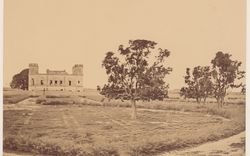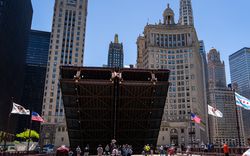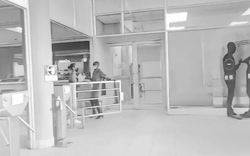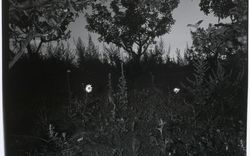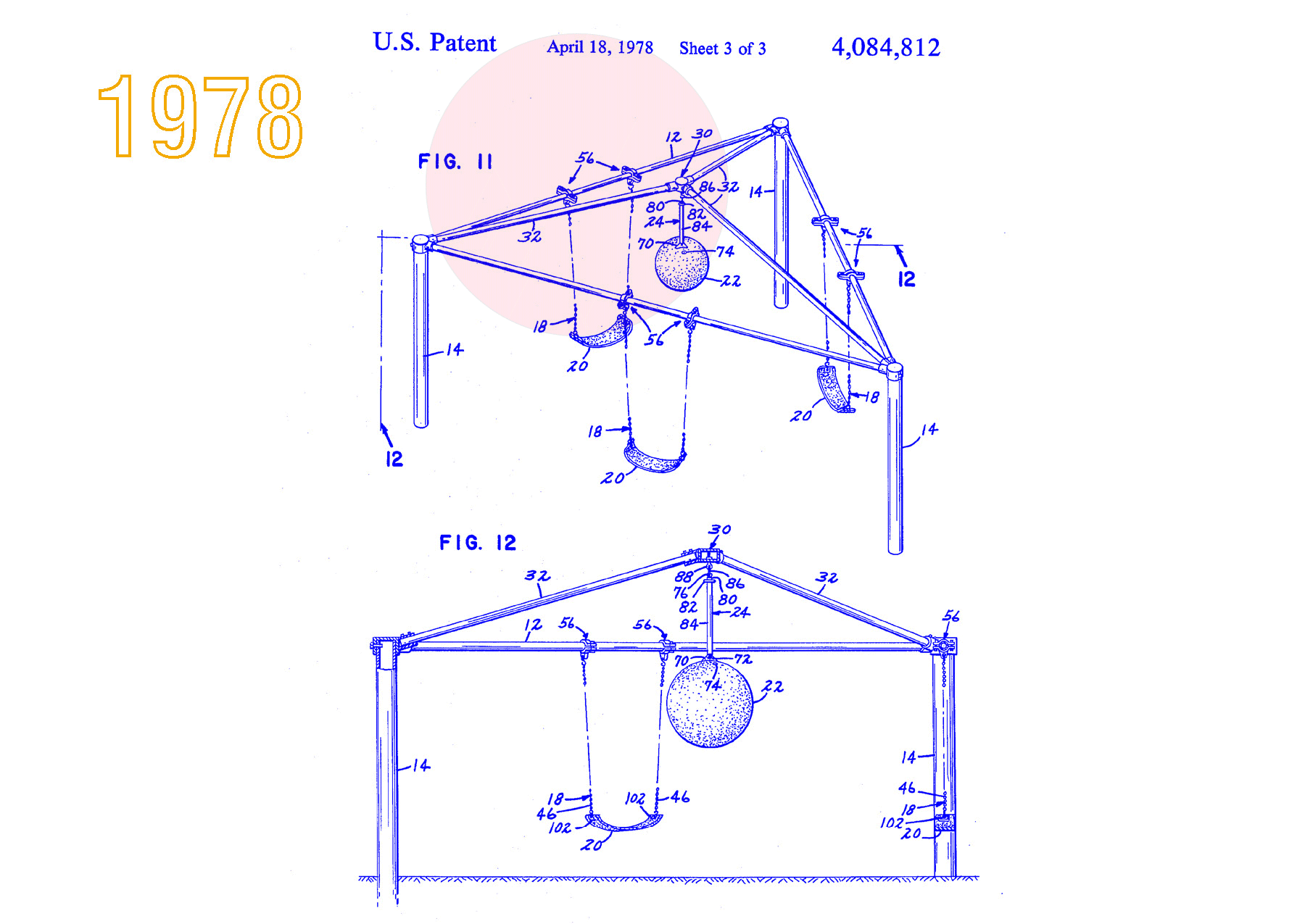Playing it Safe
Delara Rahim, Francisco Brown, Jimmy Pan, and Angie Door on the creation of play subjects and playgrounds
Play Subjects
“A new shift in attitude created an expectation that a child’s life should be one of innocence and dependence.”1
Playgrounds are an invention of the Industrial Age. Delightful creatures with bolts, ropes, and tubes, they ironically mimic the repetitive motion of assembly lines but shape childhood instead of capital. As kids were barred from production lines in Europe and North America, they left the labour force and climbed onto new mechanisms for play. These early contraptions were primarily concerned with thrill and a serious lack of safety.
-
“Victorian Concepts of Childhood,” B.C. Protestant Orphan’s Home, History Department at the University of Victoria, last modified 2007, https://web.uvic.ca/vv/student/orphans/childhood.html ↩
One storey or two tall, a frame holds swings that kids propel to go just as high in the air. Ladders on either side lead to the top, where you could perch precariously and look over your local town before sliding down one of the frame’s support poles, tens of feet to the ground.
In U.S. Patent drawing 4 084 812, we see three swings hung from a triangular frame, all angled to swing towards the middle of the structure. Amazingly, the patent text reads that having all the swings at a slight angle towards each other was much safer than not. A ball is held in the middle of the frame for kicking at the apex of each swing motion. In both structures, risk was the slippery companion of fun.
By the twenty-first century, we observed the emergence of a “safety first” approach that dulled the physical design intent in the U.S. Patent Office diagrams and descriptions. According to the International Journal of Environmental Research and Public Health 2015 issue, six categories of risky outdoor play define the playground’s success: great heights, high speed, dangerous tools, dangerous elements, rough and tumble play, getting lost, or the ability to “disappear.”1
Spaces that once allowed kids to push the limits of movement and assembly eroded into highly prescriptive zones, restricting the sensory and inquisitive impulses of play. Playgrounds were not the only place where concern for safety was used as a tool for controlling public space. The act of extracting “dangerous objects” is often a paternal tactic used in public space as a proxy for safety. In the example of New York City’s “Stop and Frisk” policy, police searched people on the street allegedly to find objects that were evidence of committing a crime. However, at the program’s peak in 2011, Gothamist reported, “nearly 90% of stops did not turn up evidence of a crime,” making the searches an invasion of privacy and the performance of safety rather than an effective method.2
This performance of safety dictates playground design as well. In reference to Foucault’s “The Question of the Subject,” children are formed into play subjects by internalizing the playground’s bounds and rules as those of life.3 Foucault’s subject is formed by codified value structures of institutions like the church and the state. We also widen the lens to the intersectional hegemonies of race, class, and gender as forces that shape The Subjects at play. The playground sits inside and outside of these places (literally) and represents the stark ironies between what and who is valued as safe and dangerous. As playgrounds have softened in their apparent risk (lower to the ground! soft ground!) kids don’t practice their experience with the world outside its gates, and perhaps, as a result, they internalize that the world not only expects but requires lower engagement, lower creativity, and lower criticality. In a way this resurrects the saying, “kids these days are getting soft!” but we say it with reverse meaning. Children shouldn’t institute violence against each other to uphold institutional power statuses of gender/race/class/ability, but they should learn how to challenge them with the freedom to ask questions and, dare say, innovate over and around them.
Safety emerged from a peripheral concern to a primary focus for children to become safe, complacent adults.
-
Mariana Brussoni, et al. “What is the Relationship between Risky Outdoor Play and Health in Children? A Systematic Review.” International Journal of Environmental Research and Public Health vol. 12, (8 Jun. 2015): 6425. ↩
-
Samantha Max, “Stop and frisk in NYC a decade after historic court ruling,” Gothamist, 12 August, 2023, https://gothamist.com/news/stop-and-frisk-in-nyc-a-decade-after-historic-court-ruling. ↩
-
Michael Foucault, “The Subject and Power,” Critical Inquiry, vol. 8, no. 4 (summer, 1982): 777. ↩
Safe Space
With safety solved, children never get hurt on playgrounds anymore.1
Contemporary playgrounds have been engineered to the millimetre, and great efforts are made to sculpt play spaces that do not cause bodily harm. This “quieting” of Victorian thrill down to a simmer is a departure from the risk-inclusive designs of the past and an arrival at the standardized play typologies that are common practice today.
-
John Tierney, “Can a Playground Be Too Safe?,” The New York Times, 18 July, 2011, https://www.nytimes.com/2011/07/19/science/19tierney.html. ↩
This multi-decade process of culling and dulling can be echoed by scanning our early case studies and plucking out everything that sent up an alert. In a photograph of play equipment in Dallas from 1900, different forensic modes reveal different worries. A heat gun shows hot steel rails and ladders in the summer sun—ripe for burns! Bars a storey tall, with nothing below them but grass, are a fall risk primed to break an ankle or worse. Rust accumulates at connections, tetanus laying in wait for a skinned knee.
The now-homogenized landscape of public play spaces has quelled these risks through clear and observable characteristics: a defined boundary of soft material, plastic-wrapped play objects and infrequent use of natural materials. Furthermore, this standardization raises questions about impacts on behavioural growth and developmental success. When examining the historical context of playgrounds in the West, the diverse, towering, and multifunctional structures of the past have turned into uniform and mass-produced low risk structures.
Physical safety has seemingly been addressed completely in contemporary playgrounds. There are now global ASTM standards for things like (F1487) Public Use Playground Equipment, and (F2075) Wood Fiber, and US Consumer Safety standards for Public Playground safety.1 There is, however, another elusive danger rooted in the materials and environments of these partitioned areas. The basic elements of play—swings, sliders, seesaws, and superstructures—have transformed from steel, wood, and rubber objects to petroleum-based castings and coatings.
This shift requires us to examine these deliberate design changes and their relationship to risk, questioning why elements once considered essential, like sandboxes, have become restricted in public projects and how the shifting relationship with synthetic materials affects safety. As Cornelia Oberlander wrote in 1978, “Sand areas represent the most flexible play, renewable, inexpensive, and ‘earthy’ play material. At the present time we are too conscious of hygiene to use this basic material more frequently. With this attitude we are depriving all our children from a play-learn experience and not making it ready for the work-leisure cycle ahead.”2
-
U.S Consumer Product Safety Commission and KaBOOM!, “Is your public playground a safe place to play?”, U.S Consumer Product Safety Commission Public Playground Safety Checklist, https://www.cpsc.gov/safety-education/safety-guides/playgrounds/public-playground-safety-checklist ↩
-
Cornelia Hahn Oberlander, “The Magic of Sand-Indoors and Out”, in Cornelia Hahn Oberlander on Pedagogical Playgrounds (Montréal: Canadian Centre for Architecture and Concordia University Press, 2023), https://press.library.concordia.ca/read/cornelia-hahn-oberlander-on-pedagogical-playgrounds/section/bd2eeb4f-f5d8-40c8-bb66-091bea57ce97. ↩
Defining safety is elusive—just when we thought lawsuits pummeled the playscape into a pure safe space, harm relents.1 Forensics reveal once-hidden threats, from material leaching to viruses to thermal modes, drawing a new line of safety that even litigation can’t fully encompass. Like a kaleidoscope, we turned these contemporary “safe” playsets and their documentation around in our hands, finding new vectors of danger with every rotation.
-
“Boy Injured On Slide Gets $9.5 Million”, The Chicago Tribune, 15 January, 1985, https://www.chicagotribune.com/1985/01/15/boy-injured-on-slide-gets-95-million/ ↩
New Ways of Playing
Kids demand danger in their playscapes, whether germy or engineered. What if the limits of risk-taking were determined by these play subjects themselves? To conjure a playful futurity that feeds their curious, demanding, ambitious, critical, and non-compliant impulses, we grew a non-linear, non-prescriptive collection of risks—a toolkit of risky design. Inspired by standard architectural drawing templates, ones that lead to standardized blocks, furniture, playground elements, we have designed an obscure template for playground elements based on categories of risk-taking during play. A contradictory narrative to the safe playground, it takes into account the relationship of multiple bodies in play, and the textures, choreography, and memories of play. The dangerous flow of possibility from the toolkit can develop new subjects with agency over their own sense of risks and rewards.
The contemporary playground, a fenced-off patch of public space adorned with colourful plastic structures and petroleum pavers, holds complex narratives and is ultimately the space that designs and shapes kids’ behaviours. The design of these spaces, with ubiquitous play structures and materials, is inherently formed by its relation to risk-taking. Standardized playground structures are designed around “risky” outdoor activities; great heights, high speeds, the use of dangerous tools, exposure to risky elements, rough and tumble play, getting lost, or even the ability to “disappear.” However, these intentions are often diluted by the control and standardization imposed on such spaces, driven by an obsession with safety that ultimately undermines the playground’s ethos.
In standardized playground design, perceived safety is prioritized over risk-taking. Such compromises question the elusive definitions of safety and control, and according to David Ball, professor of risk management at Middlesex University in London, “There is no clear evidence that playground safety measures have lowered the average risk on playgrounds.” He went on to say that the “risk of some injuries, like long fractures of the arm, actually increased after the introduction of softer surfaces on playgrounds in Britain and Australia.”1 Perceived safety is ultimately a suspicious metric, either in its sincere concern for injury or its lurking interest in control. Is there an alternative future, where standards of design could be redefined, and agency is given back to the play subjects—the kids themselves?
-
Tierney, “Can a Playground Be Too Safe?” ↩







